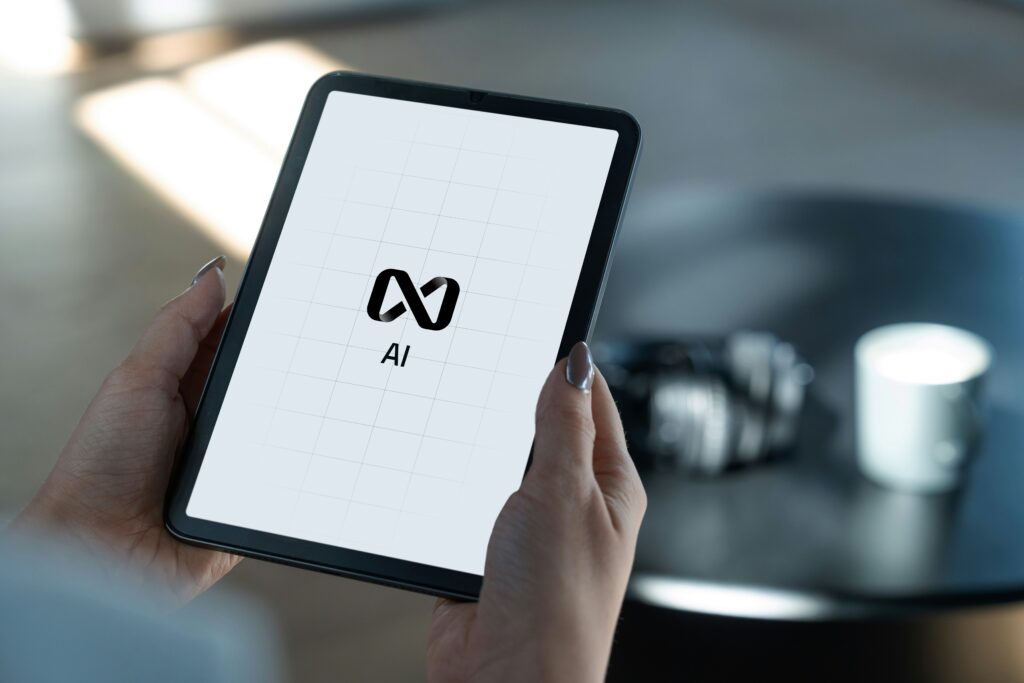Introduction
Vlogging didn’t just survive the chaos of the last few years—it adapted and got smarter. While trends came and went, and platforms shuffled their algorithms like a bad deck of cards, creators who stuck around found ways to keep engaging audiences without burning out. The format proved just flexible enough: long-form or short, raw or polished, solo or collab—vlogging remained a durable link between creator and viewer.
But 2024 isn’t about doing more of the same. What’s shifting now is faster and deeper: AI isn’t just helping—not anymore, it’s everywhere. Algorithms are changing the rules mid-game. Audiences are smarter and more niche. And traditional success metrics? Losing relevance fast. For creators, this means leaning into adaptability, niche clarity, and smart tool adoption. Otherwise, you risk getting drowned out by the noise—machine-made or not.
AI isn’t just speeding up content creation—it’s also reshaping the way that content moves. In 2024, vloggers may not talk much about cloud or edge computing, but they’re living in a world shaped by it. Thanks to AI, backend infrastructure is getting smarter: optimizing data flow, improving latency, and making it easier for platforms to deliver content at scale.
Edge computing—aka processing data near the user instead of bouncing it through centralized servers—is now a real game-changer. AI helps prioritize what data moves where, and when. That means faster uploads, more responsive live streams, and smoother user experiences—especially where connectivity is spotty or bandwidth is tight.
Then there’s automation. AI is quietly cleaning up the plumbing: monitoring server performance, scaling resources dynamically, even deploying updates without human hands. For creators, this means fewer slowdowns, more reliability, and more time focused on content—not troubleshooting.
For a deeper dive into the infrastructure driving these changes, check out The Rise of Edge Computing – What It Means for Digital Infrastructure.
AI Is Speeding Up Workflow—Without Replacing Humans
AI has officially moved from buzzword to toolbox. Across the board—marketing, customer support, logistics, and financial forecasting—vloggers and their teams are tapping artificial intelligence to get more done, faster. Need a punchy title? A/B test it with an AI tool. Want to auto-caption your video in ten languages? Done. Analyzing audience watch behavior down to every timestamp? That’s now table stakes.
It’s not just the big creators with agency-scale setups either. Small and mid-size operations are finally catching up. Thanks to AI-as-a-service platforms, you don’t need a dev team to optimize your scripting structure or automate basic research. These tools are cheap, accessible, and increasingly plug-and-play—which means more creators get to stay lean and still scale.
But there’s a catch: AI helps you go faster, not deeper. The creators cutting corners and handing over their voice to GPT without tweaking it? You can spot them a mile away. Smart vloggers use AI for grunt work and do the final polish themselves. It’s support, not surrender.
AI Is Speeding Up Workflow—Without Replacing Humans
Generative AI hit the mainstream hard, and in 2024, it’s no longer just a bonus tool—it’s central to how many vloggers work. Scripts, thumbnails, even B-roll clips are now getting a major boost from AI-driven software. Need a rough cut version of your vlog with jump cuts and captions? There’s a tool for that. Want content ideas based on your niche and what’s trending? AI’s got you.
What’s changed is speed and scale. Creators can now produce more—faster. But the catch is this: more doesn’t always mean better. The top vloggers are using AI to save time, not to replace themselves. They’re still the ones guiding tone, touch, and storytelling. That human thread matters, especially for staying authentic in a flooded market.
There’s also the ethical layer. Audiences are getting savvier—they know when something’s off. Vloggers riding the AI wave need to be up front about what they’re automating. Bias in generated content, loss of originality, and the temptation to mass-produce are real risks. The winners? Those who use AI like a good editor: quiet, efficient, and never trying to take the spotlight.
AI-Enhanced UX Is Redefining Digital Expectation
AI isn’t sitting in the background anymore. It’s front and center, reshaping how users interact with e-commerce, media, and learning platforms. In 2024, personalized user experiences have become sharper, faster, and more responsive—driven by AI models that learn from every click, pause, and swipe. Think product suggestions that actually make sense, streaming queues that reflect your mood, and learning platforms that adjust pace and difficulty in real time.
That’s thanks to real-time data feedback loops running quietly under the hood. These systems detect user behavior patterns quickly and adapt interfaces or content accordingly. Whether it’s a shopping app surfacing sizes that fit or a course platform skipping what you already know, AI-powered UX is setting the bar higher for relevance—and speed.
But there’s a catch. The more personalized the experience, the more data it requires. This raises the stakes around privacy and control. Platforms are collecting more granular user data to feed these models, while users are growing more aware—and skeptical—about how that data is used. Expect to see more tools that let users dial up or down the degree of personalization. The sweet spot is utility without creepiness.
In the end, today’s smart UX is about minimal friction paired with maximum relevance. Creators and platforms that lean into this with transparency and restraint will earn long-term trust. Those who don’t? Probably muted, maybe even uninstalled.
AI Security: Predicting, Preventing, and Pushing Back
AI isn’t just a tool for creators—it’s also working behind the scenes to keep them safe. In 2024, AI is more actively predicting and neutralizing online threats in real time. It flags suspicious behavior before it escalates, analyzes attack patterns, and adapts quickly when bad actors find new tricks. Whether it’s blocking bot-driven comment spam or detecting unusual login attempts, AI security systems are responding faster than ever.
One key layer? Behavioral biometrics. Instead of relying only on passwords or two-factor authentication, platforms are now watching how users type, scroll, and interact. Any weird behavior triggers red flags. Combined with anomaly detection—software that spots when something just feels off—these tools are making it harder for attackers to slip through.
Still, there’s risk. AI-generated deepfakes and malicious code are growing more convincing and easier to deploy. Platforms and users alike have to counter with strong AI defenses. It’s a race: the same tech that makes vlogging faster and smarter can also be used to impersonate creators or hijack their channels. The edge goes to those who stay informed and secure early.
The bottom line: AI brings powerful shields, but also sharper swords. Creators can’t afford to ignore either.
Looking Ahead: AI’s Trajectory Beyond 2025
Artificial Intelligence isn’t slowing down—it’s evolving into a foundational layer across the entire digital world. As we look toward 2025 and beyond, AI is set to become less of a standalone tool and more of a seamless presence in every aspect of the ecosystem, from infrastructure to personal tech.
What Recent Developments Tell Us
The pace of innovation in AI points toward deeper integration, more autonomy, and exponential learning speed. Key trends shaping the next frontier include:
- Smarter automation: AI is moving from reactive algorithms to anticipatory systems that predict behavior and optimize outcomes in real-time.
- Ubiquity in daily life: From content recommendations to predictive text and smart assistants, AI will become practically invisible—but always active.
- Cross-industry embedding: Expect every sector—healthcare, finance, education, entertainment—to embed AI deeper into their core functions.
The Synergy with Emerging Tech
AI’s influence will only grow stronger as it converges with other next-gen technologies:
- Quantum computing: Unlocks the ability for AI to process data at rates unimaginable with traditional machines, boosting problem solving in fields like drug discovery and climate modeling.
- 5G networks: Enable ultra-fast, low-latency communication necessary for AI-powered real-time applications like autonomous vehicles and remote surgeries.
- Internet of Things (IoT): With billions of devices online, AI acts as the nervous system interpreting data, automating responses, and learning from environmental feedback.
Final Takeaway: AI as a Digital Substrate
More than just a tool, AI is fast becoming a digital substrate—a foundational layer that informs, powers, and enhances nearly all interactions in tech.
Moving forward, creators, developers, and brands must no longer think of AI as an add-on. Instead, consider it an embedded, evolving force that should inform strategy, design, and innovation at every level.
Automation Is Redefining the Role—Not Removing It
Forget the tired narrative that automation is just about replacing humans. That ship has sailed. In 2024, it’s not humans vs. machines—it’s humans with machines. Creators and digital professionals are now looking at automation as a co-pilot, not a competitor. AI tools are taking over repetitive tasks, speeding up thumbnails, subtitles, analytics, and even rough cuts of videos. But the best results still come from people who know how to guide the tools, not just use them.
Roles are shifting. Editors are becoming directors of workflows. Scripters are turning into prompt engineers. Community managers are dipping into data to tailor conversations at scale. Upskilling is no longer optional—it’s survival. Knowing how to prompt, fine-tune, and interpret AI output is as essential now as knowing how to shoot or edit.
The vlogging space is leaning hard into this hybrid model: sharper content, built faster, but still human at the core. If you’re not learning the tools, you’re falling behind. The future belongs to those who adapt—not just those who grind.




